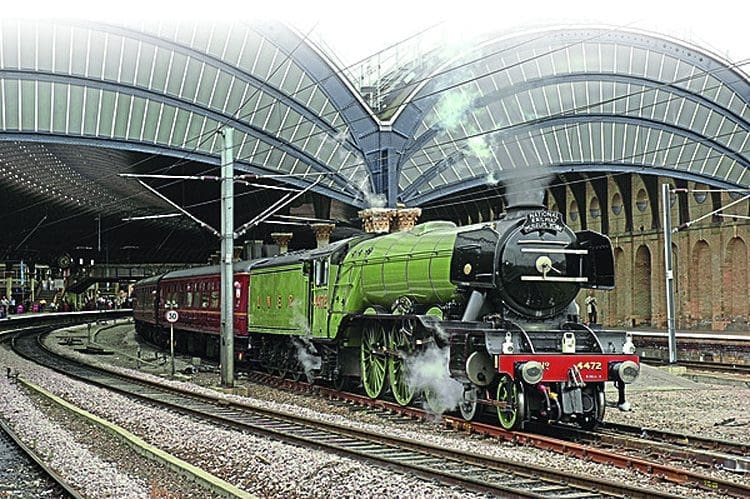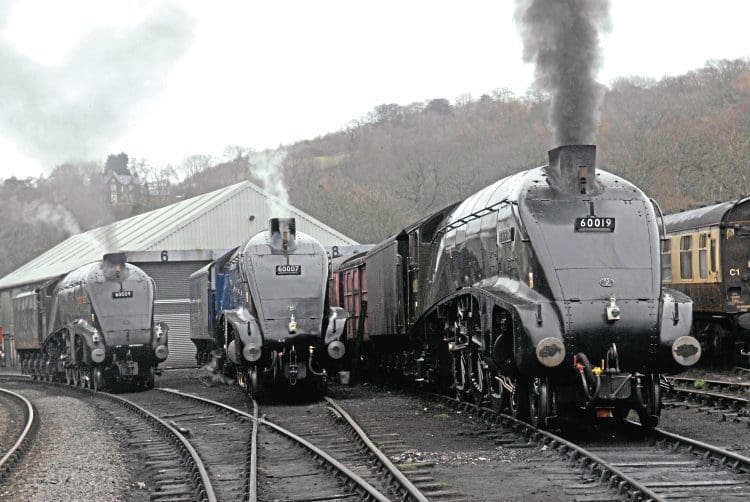After years in the finance industry, and in a complete change of career direction, Brian Sharpe became assistant editor of Heritage Railway in 2002. This summer he stepped down to take a well-earned retirement, and over the following pages he recalls some of the preservation highlights he has witnessed and reported on over those 16 years.
Like many teenagers in the 1960s I had been an avid trainspotter; in my case, my local line was the East Coast route where I managed to ‘cop’ many LNER Pacifics, including all of the A4s.
For everything Heritage Railway magazine, why don’t you like us on Facebook, or follow @HeritageRailwayMag on Twitter here.
The King’s Cross engines such as Mallard, Sir Nigel Gresley and Flying Scotsman were an everyday sight but one afternoon in 1963 an apparition came into view at one of my favoured spots, Walton level crossing north of Peterborough. It was an immaculate but unfamiliar-looking steam engine heading south light engine on the slow line.
Enjoy more Heritage Railway reading in the four-weekly magazine.
Click here to subscribe & save.

As it passed, I naturally noted down its number – 4472, but the four-figure number was unfamiliar, as was shade of green and the initials LNER on the tender.
However, I recognised the name on the red plate over the middle splasher – Flying Scotsman. It was not the No. 60103 I had been familiar with though – and this was my first encounter with railway preservation.
For everything Heritage Railway magazine, why don’t you like us on Facebook, or follow @HeritageRailwayMag on Twitter here.
I later discovered that the engine had been purchased by Alan Pegler, overhauled at Doncaster and was heading for London to work its first railtour in private ownership.

Sadly it was another couple of years before I acquired my first camera, by which time the LNER Pacifics had retreated much further north, so I never photographed any in BR service. I did not even really notice them disappear as I think I was more interested in the shiny new diesels; ‘copping’ the Deltics in numerical order as they entered ECML service.
By the time BR steam ended completely in 1968, I was travelling more widely across the country. I saw more apparitions on my travels such as a maroon Ivatt mogul, No. 6441 among the rusty ‘Black Fives’ at Carnforth, then witnessed the arrival of No. 70013 Oliver Cromwell at Bressingham in August and a month later, a rusty Standard 5MT 4-6-0 No. 73050 appeared at my local shed at New England.
Read more and view more images in Issue 246 of HR – on sale now!
For everything Heritage Railway magazine, why don’t you like us on Facebook, or follow @HeritageRailwayMag on Twitter here.
Advert
 Enjoy more Heritage Railway reading in the four-weekly magazine. Click here to subscribe.
Enjoy more Heritage Railway reading in the four-weekly magazine. Click here to subscribe.




